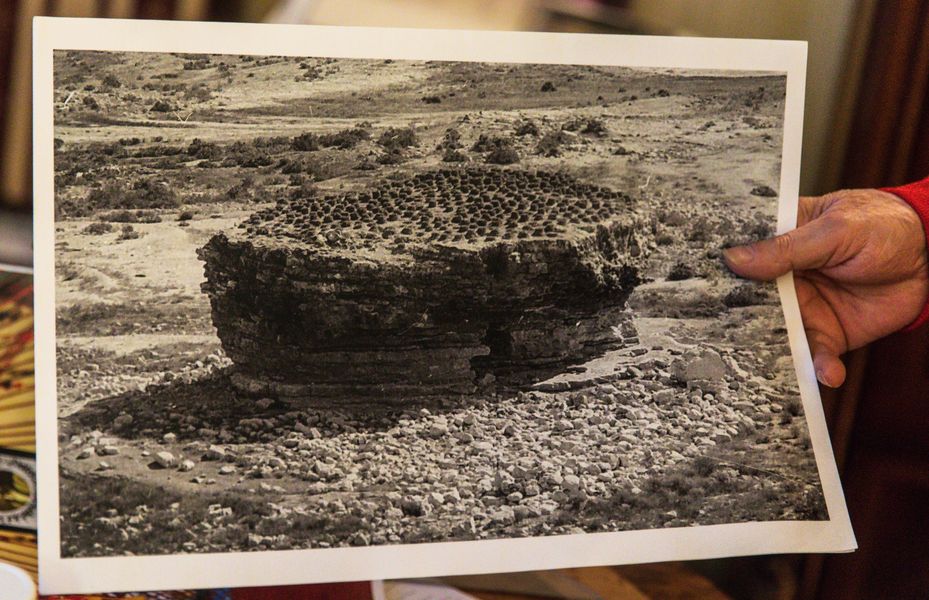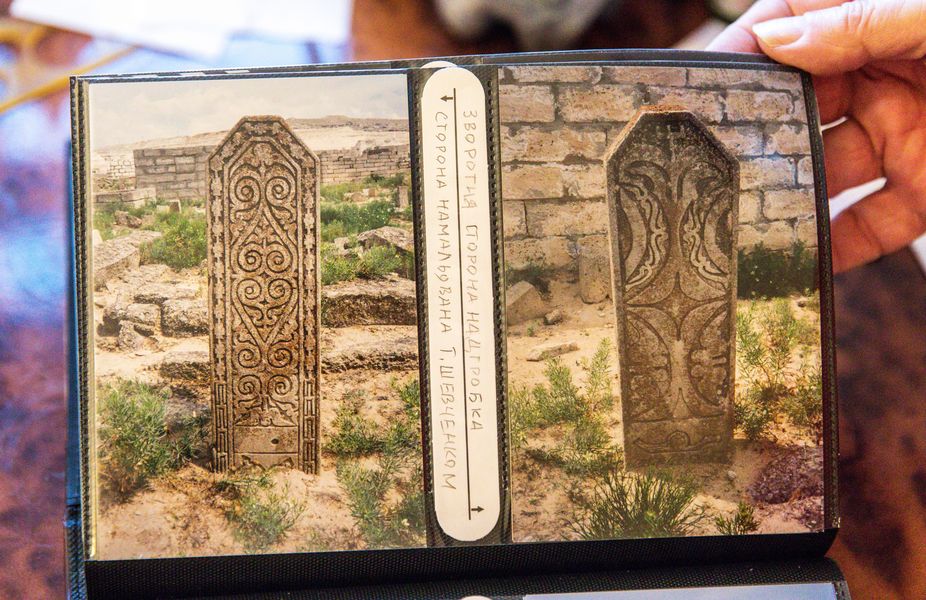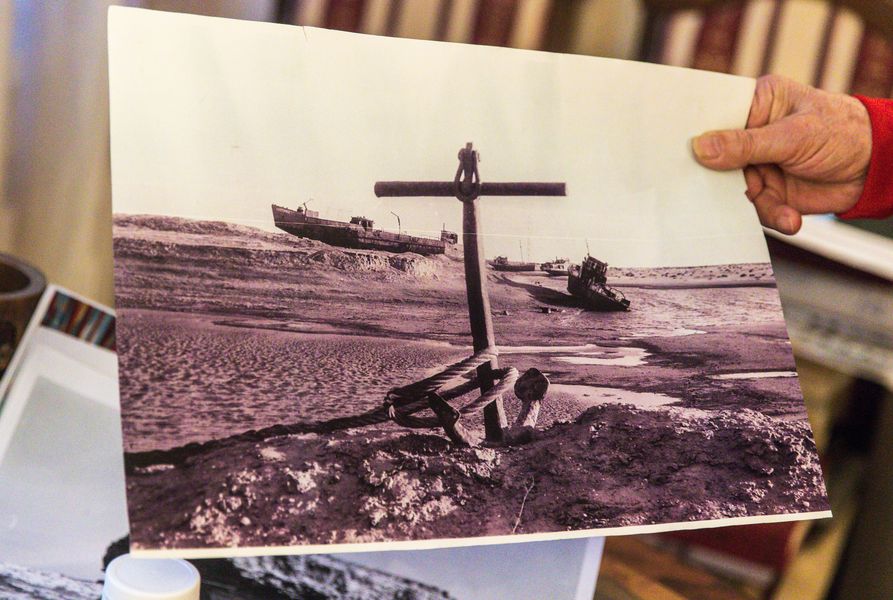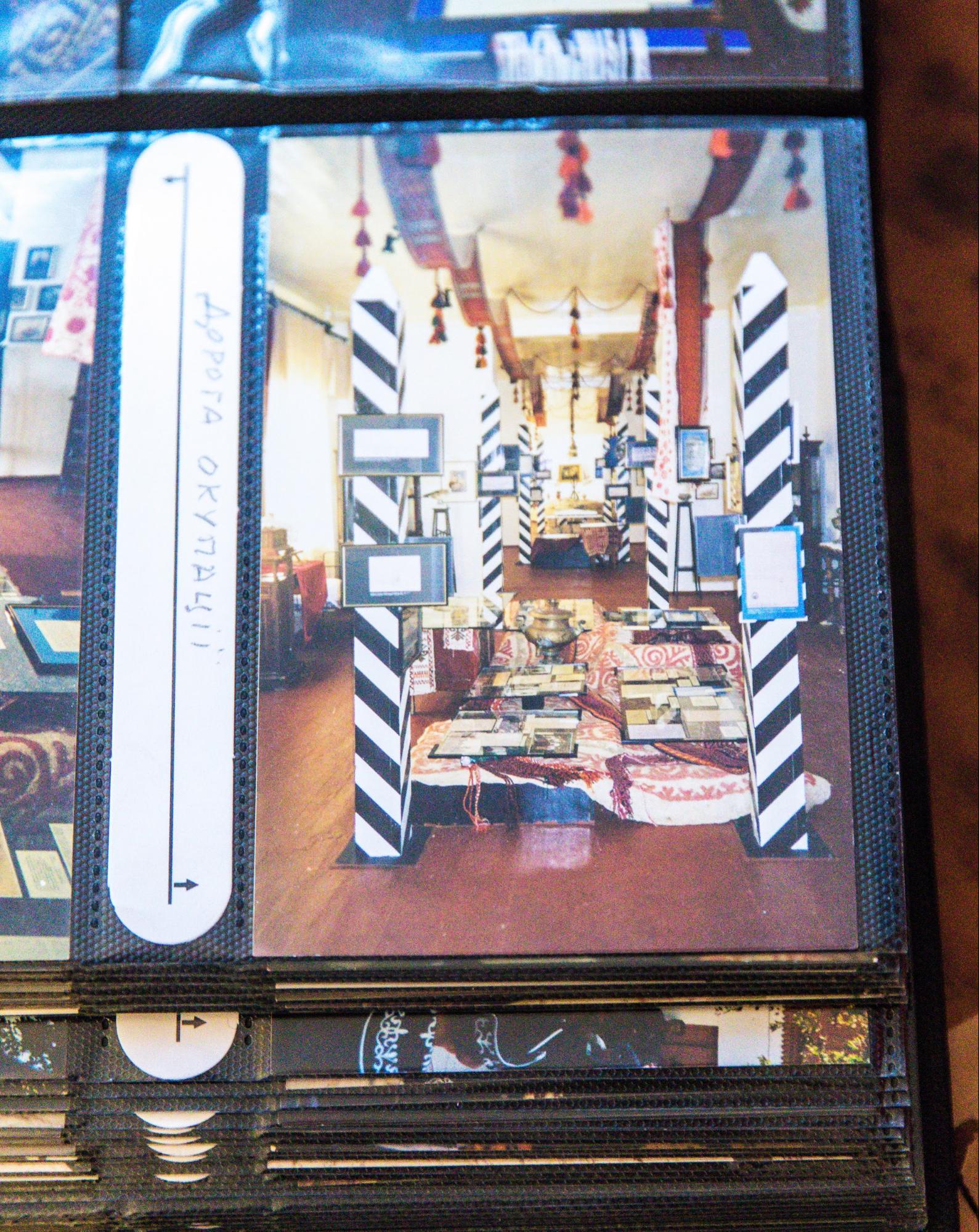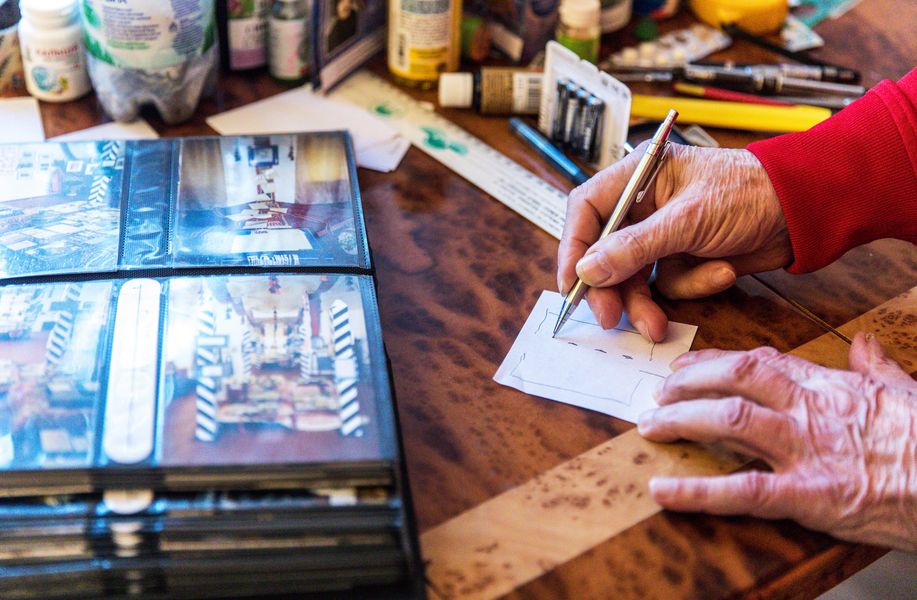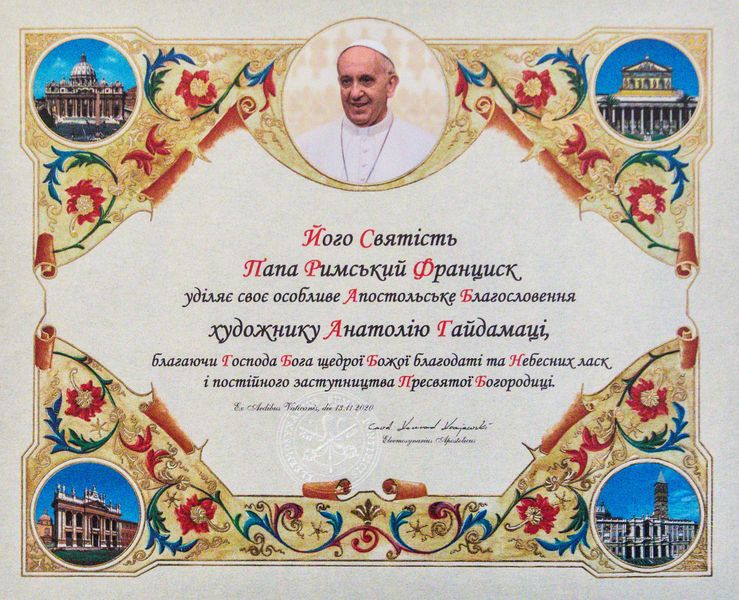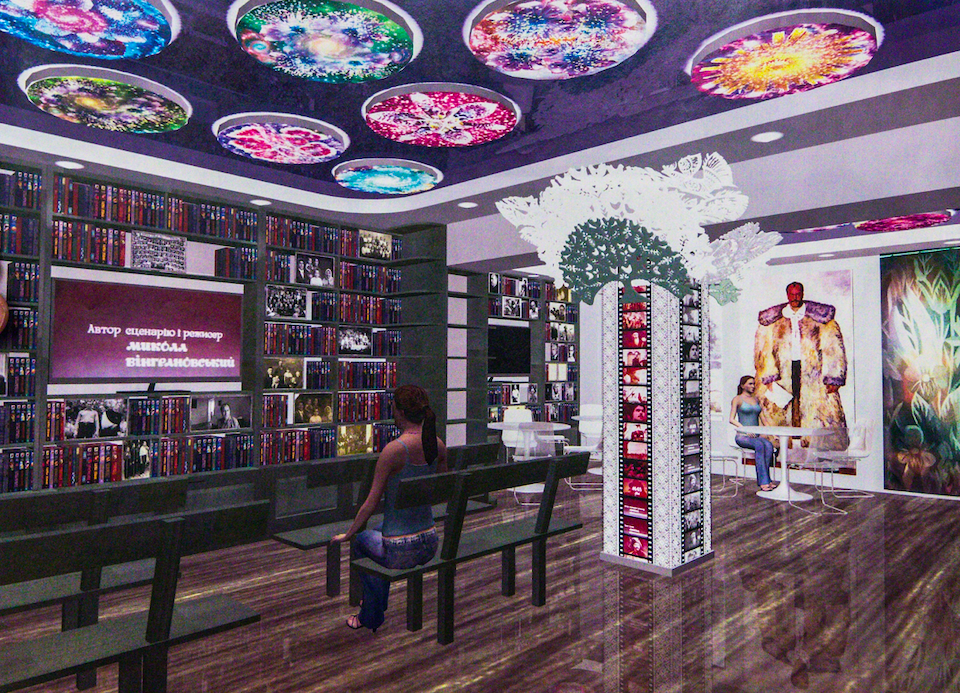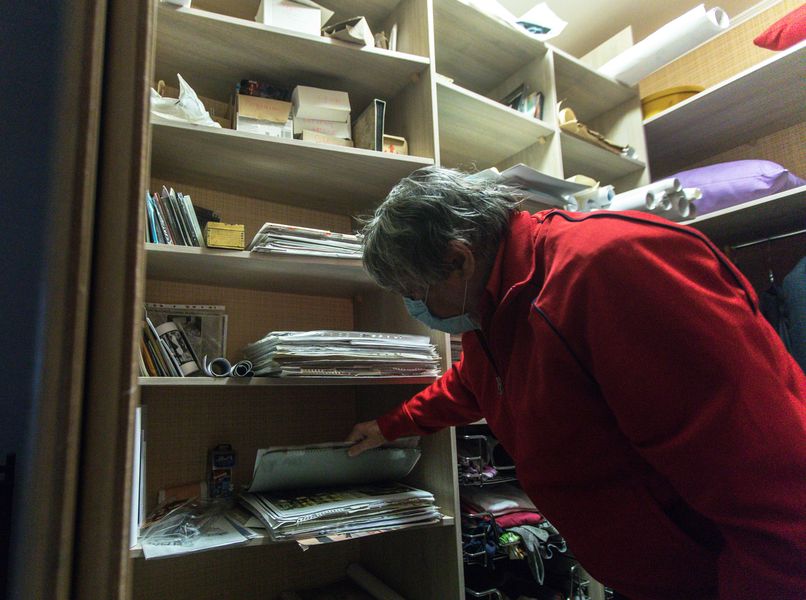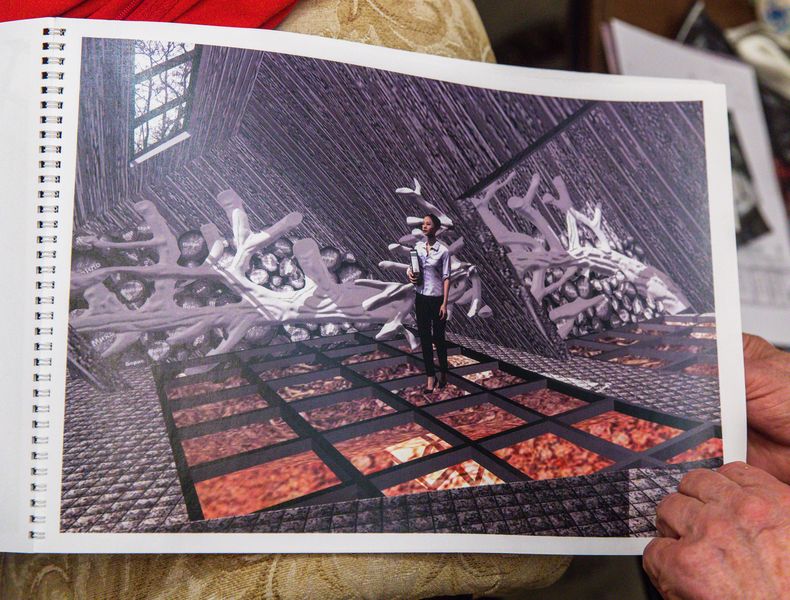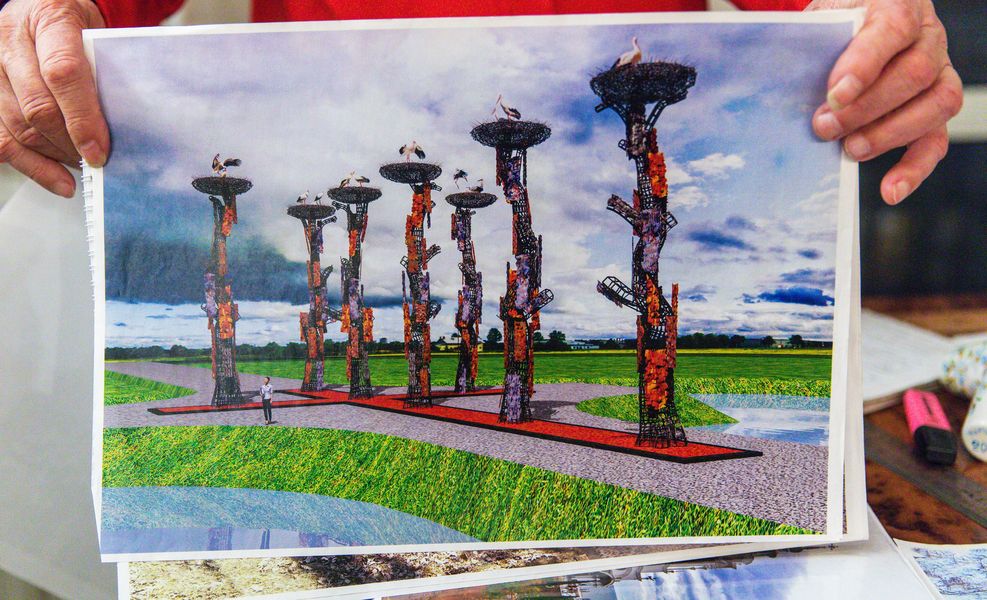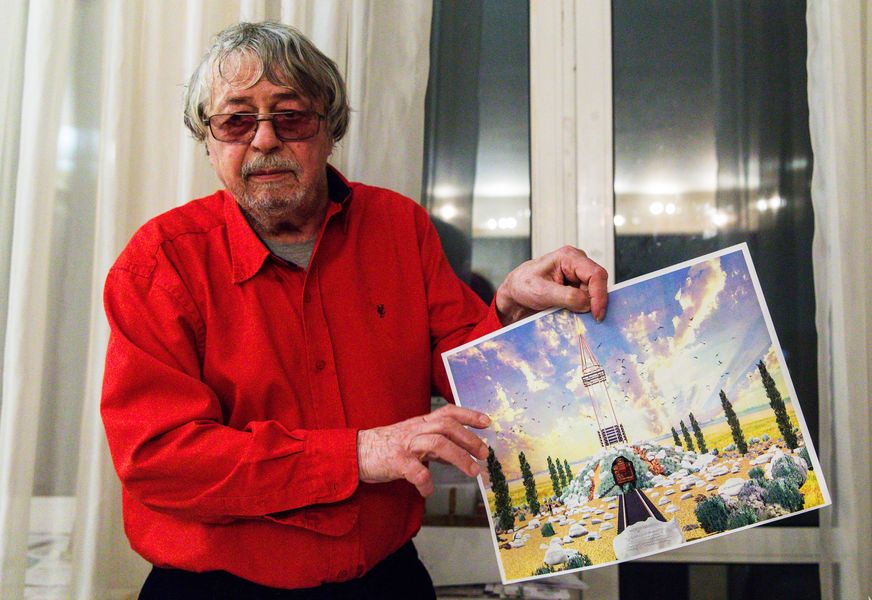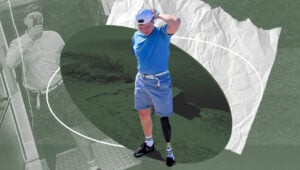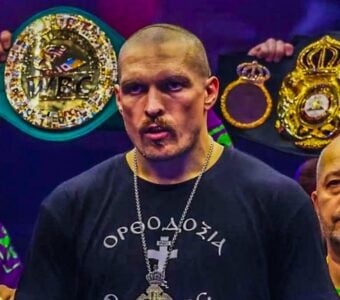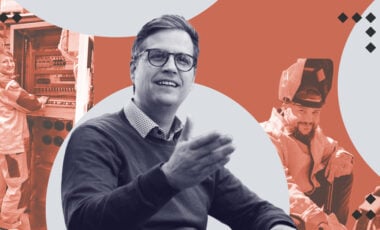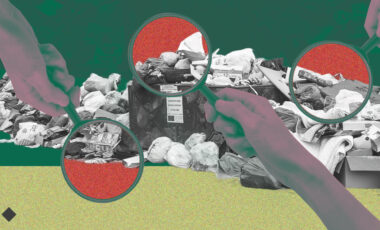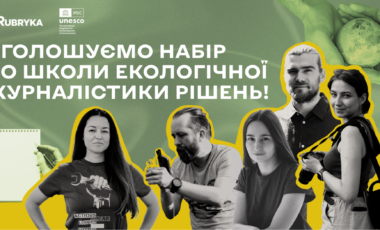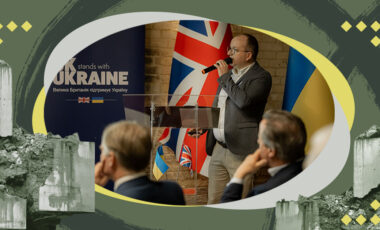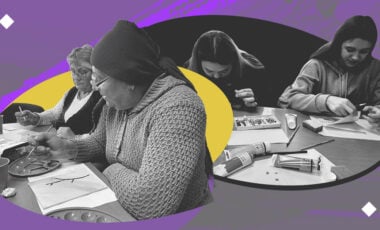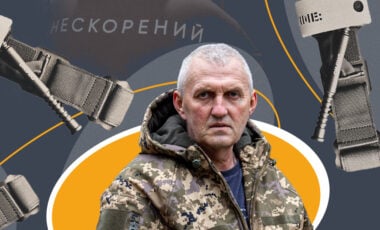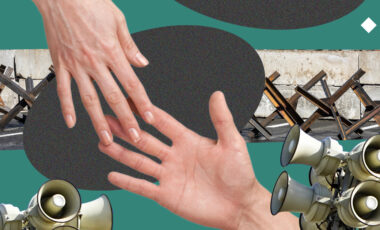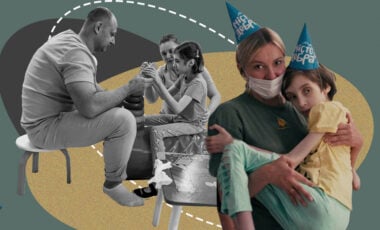"Vandalism and ZhEK." Legendary artist Haidamaka about restoring Lesya Ukrainka museum, Kobzar, and secrets of a good exhibition
On the occasion of Taras Shevchenko's birthday, we talked to the most famous designer of exhibitions in 12 countries about the museums and trails of Kobzar, the scandalous 11 million hryvnias for Lesya Ukrainka's house, and topics that Ukrainian museums lack.
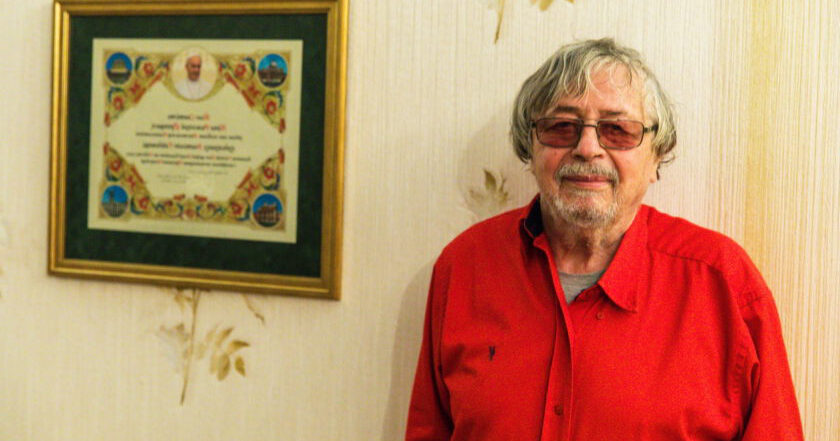
In the apartment of this famous Ukrainian artist, everything shows that creative life doesn't fade even at 81: models, sketches, pencils, brushes, paints, notebooks, stacks of ready projects, and research materials… Anatolii Haidamaka is a prominent Ukrainian artist, People's Artist Of Ukraine, Honored Artist, Laureate of the Taras Shevchenko State Prize. The latter award has a special symbolic meaning: the artist's artistic path is closely intertwined with Kobzar and his legacy for Ukrainians: he's the only artist who traveled all the places which Taras Shevchenko visited, and honored his footprint, creating Shevchenko museums. However, Shevchenko isn't the only topic of many museums and monuments that the artist worked on. Museum on the Khortytsia island, National Museum "Chernobyl," Kotsiubynskyi Museum in Chernihiv, Koroliov Cosmonautics Museum in Zhytomyr, famous memorials to the Heroes of Kruty and the Holodomor victims, the Museum of Trypillia Civilization, the exposition of the Museum of the World War II, recognized the best in Europe, the creation of museums and memorials, even in China, the UAE, Germany; these are all his implemented projects. We personally discussed with the artist the importance of Shevchenko for Ukrainians now, the state of museums in Ukraine, and the secrets of a good exhibition.
"Shevchenko Museum in Kazakhstan is an illustration of the Russian invasion"
– You're the only Ukrainian artist who followed Shevchenko's path. Why and what is the route?
Now I'll show you so you see for yourself. It's an album about the construction of a museum in Kazakhstan, Shevchenko Fort; these are the places where he served. We created the Kobzar Museum there in 1997.
– Why do you believe Shevchenko is respected all over the planet as an artist, and in our country, as a poet?
It's just that he's so national and social that it's easier for other countries to perceive him as an artist.
– Is he an artist or a poet for you personally?
Both, because they cannot be separated.
By the way, he used to come here to paint. I found the exact places where Shevchenko sat and painted. I took his picture and walked around, looking for a complete match.
It's impossible to convey this feeling because 100 or 150 years later, you've come to the place Kobzar was looking at. The landscape hasn't changed in so many years: the stones lie as they used to.
– What's special about the Kobzar Museum in Kazakhstan?
In Shevchenko's era, there were Russian occupation forces in Kazakhstan, as we have now in Donbas. Shevchenko was sent there, but he wasn't with a gun. He went with a pencil, brush, and pen. He didn't shoot at anyone and didn't carry a gun.
The idea behind the museum is a highway. Hall after hall. On the sides, there are all the fortresses founded by Russia, which were painted by Shevchenko.
And this road goes through all the halls and seems to break the Kazakh yurt; its pieces are on the sides of the hall. In front and behind, you go through a torn yurt and further, all the way. When I offered the Kazakhs the concept, they were even afraid of such courage. But I did it; the museum still stands there.
– So is the Shevchenko Museum in Kazakhstan more an illustration of the Russian invasion?
Exactly.
– What do you think Shevchenko felt in this system, although he didn't shoot, he was still part of it?
He understood everything, but… It's not the same as in Donbas, when our guys get caught, their heads are cut off. He respected the Kazakhs. He treated them with respect; he painted them, wrote poetry about them. He had a different attitude towards these people. That's why Kazakhs love him now.
(flips through the album)
And this is the opening of the museum. Our ambassador didn't make it. The Russian ambassador Smirnov arrived. The paradox of Shevchenko's fate. Here's the opening, and the Russian ambassador comes, not the Ukrainian. But you have to hand it to him; when they gave him the book of responses, he said: "I have no right to sign the first page, but I'll write on the second."
In my museums, there are always 2-3 bottoms of embedded symbols. Then the Russian ambassador said nothing about the symbols placed in an exposition. Although, apparently, he understood everything.
And here's Shevchenko's last road: the way home. He was returning home to Astrakhan on this road. I drove this road through Kalmykia.
– Tell us, what exhibitions dedicated to Shevchenko are in Russia and other countries?
I traveled his places, starting from the Ural, Orenburg (I created a museum-guardhouse there), neighborhoods, villages, described by Shevchenko: Ozerne, Gai, I visited them. Impressions are insane. You come in; the houses are normal, everything is growing. You walk, they'll treat you with sour cream and varenyky. You enter a Russian village. In the center: a drunk lying, everything is skewed, mud, nothing grows. And we enter a German settlement: sidewalks, asphalt, brick houses, perfect order, like Germany is.
– Now they say a lot that it's important to talk about the classics as living people. We have many people who talk about Shevchenko as a great Kobzar, martyr, patriot. And they say little about Shevchenko as a living person with feelings and problems. What do you think: can you save the memory and do it contemporarily, without creating a "mausoleum"?
One does this without problems. For instance, I have a project of a monument to Shevchenko in Kazakhstan. Translating all his graphic works into sculpture. The idea is that 200 years later he returned to his heroes, whom he then saw alive. He talked to them, drew them from life. And he also showed their way of life, clothes.
Shevchenko was the first to show the Kazakhs and draw them. They don't have portraits on the tombstones but ornaments. Muslim tradition. Apart from Shevchenko's drawings, there's not much visual heritage left in the history of Kazakhstan.
– What was your goal to follow all Shevchenko's paths? Did you want to experience everything and then display it in the exhibition?
It was a way to restore and preserve the memory of Shevchenko. This is an enormous task and a big topic, no one will raise it today.
I did all Shevchenko's museums: Kyiv, Kaniv, Moryntsi, Kazakhstan, Orenburg. It so happened that I had to do everything.
"Political dancing on bones." About authenticity, inspiration, and scandal with Lesya Ukrainka Museum
– Tell us, what are the secrets of a good exhibit?
First, it must be symbolic and creative.
Second, why do we visit the museum? To see the authenticity. To see the originals. There's an ordinary pencil, and there's a pencil Shevchenko used himself to draw "Kazakh Katya." A museum is a place that should show it.
– Recently, a scandal broke out around the Lesya Ukrainka Museum in Novohrad-Volynskyi. It's due to the problems of inauthenticity and negligence. You participated in the exhibition's creation dedicated to the 150th jubilee of the writer there. Tell us your view on the problem.
Unfortunately, in Soviet times, one or two families settled in Lesya's house. It's our problem. People don't understand the value of the original, that it was the house where the prominent writer was born. Well, Lesya died, so Petro settled down and made the windows he wanted, covered the roof because it was leaking…
– What is planned to do with the museum now?
Now you need to restore the authenticity as much as possible. There are memories, but very little material. And unfortunately, it still won't be like the Kotsiubynskyi Museum in Chernihiv, because no ZhEK (public utilities service provider – TN) has settled in the Kotsiubynskyi Museum in Chernihiv. After the writer's death, his daughter Iryna preserved everything, and everything remained the same; as the table at which Kotsiubynskyi wrote stood, so it stands now. With Lesya Ukrainka's house, we can only choose the furniture of that time, make it look authentic. It'll be an interpretation of the era in which Lesya lived.
– But opponents have a different opinion. They think it's necessary to modernize; they want to create further construction, expand a literary drawing-room. What's your position?
My position is categorical: no additions. First, because we'll lose originality forever.
Second, we don't require it. It's unnecessary in terms of space, all Lesya's works fit there. They don't have as much material as with Shevchenko. There's not even such a patron who'd collect Lesya Ukrainka memorabilia. It's necessary to fill that area we have now with a quality exhibit.
– You were in this museum. Immediately after they made the infamous negligent repairs, the floor was painted right around the furniture. Assess the museum's condition now.
It's just vandalism and stupidity. This is "ZhEK," and that's it.
– What do you believe the exposition should be like? Is it possible to create something really interesting from this existing territory?
Of course. The exhibit must be available. Whoever wants it can take the book and read it. Because there are no valuable originals or 1st editions one needs to keep under glass. These are the books you can take, read, and return. And you need nothing. 11 million (provided for restoring the Lesya Ukrainka Museum by the state – ed.) is a disproportionate amount. You can do so much for 11 million!
– Why do you think this project arose? Who's lobbying it?
People self-promote on the anniversary. Here, he's a good man who wheedled 11 million out for the museum of Lesya Ukrainka. And if someone's against it, they don't like Lesya Ukrainka! Not patriots, and against Lesya Ukrainka, and Shevchenko, and the Heavenly Hundred?
I'm against the form they want to create.
First, who did the People's Deputy who initiated this project consult with, if the museum's director tells me: "We need no additions"? And the team also believes the same. They'll come here with cranes and destroy what we have.
Regarding the allocated funds… A luxurious working project costs as much as 5 thousand hryvnias. And 600 thousand hryvnias were allocated for designing the further construction… It's a reason for corruption and no more.
– Memory must be honored and memorials must be created. But should it be Ukraine's priority now?
It should be a priority, but we need to sit down and figure out what we need, where we need to throw billions, whether we need it today, whether it's political dancing on bones.
The state doesn't have a plan of what we need to do… that 11 million is given for reconstructing Lesya Ukrainka's house, and the museum of the Ukrainian Cossacks can't obtain a million to cover the roof, and the rain floods the exhibits. What can we talk about?
There's no understanding among the state officials of what we need. There's a lack of expertise in decision-making.
– And what museums are you inspired by? There are many museums, many expositions, but what example would you set for, for instance, Novohrad-Volynskyi and Lesya Ukrainka?
For example, the Vinhranovskyi Museum. It's not a memorial, it's just an office converted into a museum. And not old, but alive. You go there, drink coffee, take a book, read, meet people, watch a movie.
– Is this your project?
Yes, my project. There are tables you can drink coffee at, take a book, and read; it's not closed. At Lesya Ukrainka's, we can also apply this principle, and it'll be very organic for Lesya's spirit; we don't have to create the collective farm meeting room.
– Do you agree that the museum in Novohrad-Volynskyi needs changes?
Of course, it's very rural now.
But it's a dime a dozen. We made the Vinhranovskyi museum in Pervomaisk in the Mykolaiv region. Around the perimeter, we put the furniture with futuristic "planets" of Vinhranovskyi. It cost as much as UAH 300 thousand. And in Novohrad-Volynskyi, 600 thousand is only the project of additional construction, a "booth." So it's an indicator for you. The price is exorbitant. Not only will the community lose money, but they'll do the crime against memory.
"What do we need more?" About remembrance and topics, Ukraine lacks
– What topics are still missing in Ukraine? What ideas and suggestions do you have? You said that you had 15 kg of unrealized projects, explain some of them, please.
15 kg turned out to be 40 (laughs).
There are many problems in Ukraine but no state policy. We can create not only museums but also memorials that should become state ones. And so many topics haven't been disclosed yet… For instance, in 1939, Soviet troops occupied Bukovyna. And it began: the occupation, the NKVD, the destruction of temples, collective farms. And people lived completely differently. They were pious, went to church, and here it was. Disaffection began, and the war was approaching. And then the Soviets said: "So, whoever doesn't like the Soviet regime, you're getting ready, and we open a green corridor for you and get lost in Romania."
And the people left. The Soviet authorities opened the green corridor. They shot them all there. Stutterers killed everyone who was still moving on the ground on horseback with pistols. It happened on April 1; the event turned 80 years.
I visited that place, walked that road. It's between Romania and Ukraine, the Chernivtsi region. I walked 3 kilometers with a border guard, came from Romania from the other side. And this idea appeared: a knocked-down wedge of cranes that didn't reach Europe.
The birds fly, and they're knocked down, and they fell to the ground. Two bell towers: one on the Ukrainian territory and the other one on the Romanian side ring. It's a memorial between Romania and Ukraine. I showed the Romanians, and they say: "We didn't know about this tragedy, but it makes the hair stand up on the back of the neck."
– If we go back to modern events: the occupation of Crimea, the war in the East: should memorials be created and memory be honored here? We're talking about the events of World War II, but we have a war too.
Here's my project dedicated to the deportation of Crimean Tatars.
A train is approaching, a mountain is falling apart, rivers have dried up, stones are scattered; these are all Tatar villages. The spectator goes inside on the rails, finding a concrete tunnel, and a train. Throughout the tunnel, there's a movie "Khaitarma" projected on the ceiling and the walls. You experience this violence, screams, dogs… You enter this atmosphere and terrible situation. And on top, you find the frame of the minaret.
And again, this entire memorial can be easily made for 11 million, but it's allocated for the house of Lesya Ukrainka to paint the floor and add the "booth." And what do we need more?
Photo: Rubryka
Also, read about how the Museum of Science in Kyiv works, and what surprises it holds.





